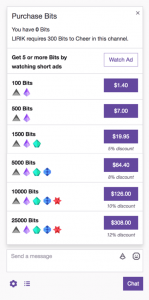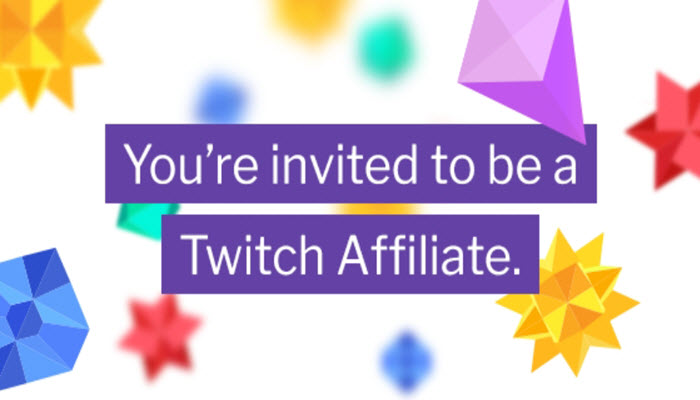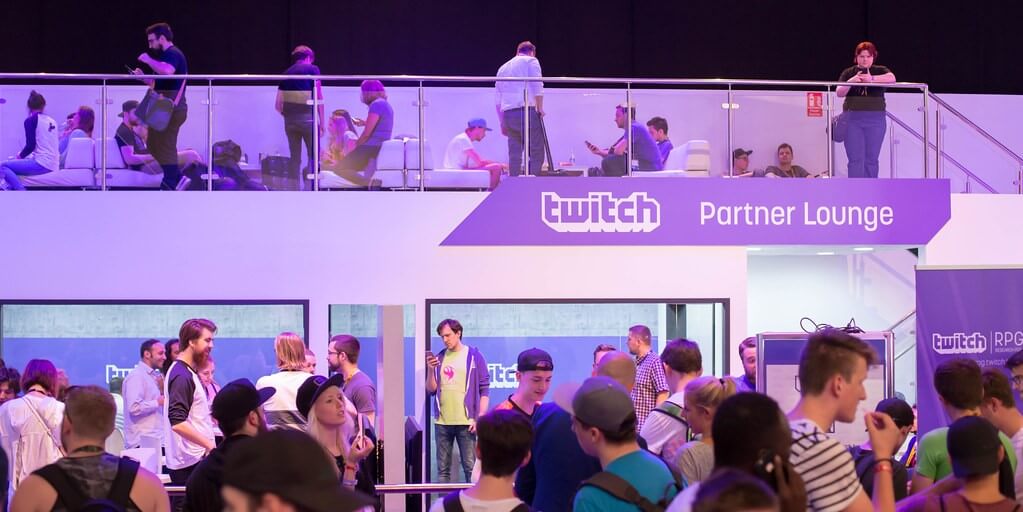When you first enter the world of Twitch, whether as a streamer or a viewer, you’ll often hear a few terms being tossed around. You’ll see people who are celebrating the fact that they finally achieved their affiliate status.
And then you have people saying they’re pushing for partner, or are celebrating the achievement of their coveted partner status. You’ll probably even see people with a checkmark next to their names in chats and pages with relative frequency.

But what exactly are Twitch affiliates and Twitch partners?
You don’t need to be an affiliate or a partner if you want to start streaming on Twitch. You don’t even need to be either of those if you would like to start accepting money via third party donations (i.e. PayPal). In fact, if you want to sell merchandise right from the get-go, you can without becoming an affiliate or partner.
 However, if you want your viewers to be able to subscribe to you (and use your emotes) and if you want to be able to accept bit donations, you’ll need to be an affiliate at the very least. If you’d like a bigger cut from subscriptions, more emote slots, and many other benefits, you’ll then have to be a partner.
However, if you want your viewers to be able to subscribe to you (and use your emotes) and if you want to be able to accept bit donations, you’ll need to be an affiliate at the very least. If you’d like a bigger cut from subscriptions, more emote slots, and many other benefits, you’ll then have to be a partner.
If you are a newer streamer still learning the ropes, it can certainly be confusing figuring it all out. Today, this article will help you figure out the difference between an affiliate and a partner – as well as tell you everything you need to know about the requirements, the pros, and the cons of each.
What is a Twitch Affiliate?
When you begin streaming on Twitch, there are quite a few achievements that you can get. Two of the biggest ones you can achieve are affiliate and partner.
Achieving affiliate status is much easier than partner, simply because the goals you need to reach are far less intense and difficult to get. But with all of that said, what does it mean to be a Twitch Affiliate? And what does it take to actually get there?
Twitch Affiliates are streamers that have reached certain streaming goals or targets determined by Twitch themselves. These goals must be met before Twitch will invite you to their affiliate program.

Becoming an affiliate allows you to start receiving donations in the form of Twitch bits (the website’s currency). Bits are purchased by viewers from Twitch, and they can donate them to you for support.
In return, they can get bit badges and bit emotes. Once you hit affiliate, you can also start earning money from subscribers. Yes – becoming an affiliate allows you to earn an income while you play video games. A dream for many video game lovers worldwide!
Another thing to note is that when you are an affiliate, you start out with three emote slots. One for tier 1, one for tier 2, and one for tier 3.
However, you earn more tier 1 emote slots (up to five maximum) for reaching certain subscriber goals. You can also start earning some money from ads that run on your channel! Even though a lot of people know how to block ads on Twitch, there’s still some revenue to be made.
Requirements to Become a Twitch Affiliate
If you are literally just starting out on Twitch, it might be somewhat daunting to look at the list of targets you have to meet. Don’t lose hope, however, because affiliate is actually quite achievable – even for new streamers. Check out this list below:
- Your stream/channel needs to have a minimum of 50 followers
- In the past 30 days, you should have a minimum of 500 minutes broadcasted or streamed in total
- You should have streamed at least 7 unique days in the past month
- You must have a minimum average of 3 concurrent viewers during the past 30 days
Reaching this is simple, and for many, they can achieve affiliate within a few days of starting. Don’t be discouraged if it takes you longer – go at your own pace. Many factors can affect the speed in which you can get these achievements, from your choice of game to the amount of networking that you do.
Pros and Cons
Naturally, there are pros and cons to being an affiliate – and here they are listed below.
Pros:
- Much easier to achieve than Twitch Partner
- Allows you to get subscribers and accept bit donations
- You can have your own emotes!
- Your subscribers get the same benefits regardless of whether you are an affiliate or partner (with the exception of the number of emotes)
- You can make money from ads (at a smaller cut than partners)
Cons:
- Fewer emote slots than partners
- No dedicated affiliate manager to help you along as you build your stream
- Smaller payout percentages compared to partners
- You don’t always get transcoding (the ability to select stream quality from 160p/360p/480p/720p/1080p or your maximum quality set) available on your channel so it is more difficult to stream at maximum quality since some of your viewers might not be able to watch the stream
- VODs are only stored for 14 days before being deleted
- You can’t multi-stream to other websites as part of your affiliate agreement
What is a Twitch Partner?
 Twitch Partners are basically affiliates – but so much better! Partner is much more difficult to achieve than affiliate, making it feel like an exclusive club (it practically is). There are only around 30,000 partners worldwide at this time.
Twitch Partners are basically affiliates – but so much better! Partner is much more difficult to achieve than affiliate, making it feel like an exclusive club (it practically is). There are only around 30,000 partners worldwide at this time.
Needless to say, many who stream on Twitch find themselves aiming for a coveted spot in that exclusive club. But getting there isn’t easy – to apply for the Partner program, you have to already be an affiliate, and you need to meet the requirements.
As a partner, you’ll be able to earn money from Twitch the same way that affiliates do. The difference is – you get more of everything. More emote slots, a bigger cut from subscriber fees, a bigger cut from ad revenue, and so on.
You also get more benefits:
- Custom bit cheer emotes
- Up to 50 subscriber emotes in total
- Guaranteed access to stream transcoding, which means you can stream at any quality you want
- Your past broadcasts are stored longer (60 days)
- You get a partner manager, who will help you with your stream and any Twitch related issues
- You get the checkmark (verified badge next to your name!)
When you are a Twitch partner, you also get priority when it comes to partnership programs with many companies looking to partner up with Twitch. On top of that, you can also get access to the Twitch Partner lounge at TwitchCon and special treatment at other gaming events.
Requirements for Twitch Partnership
To become a partner on Twitch, you’ll need to reach the goals that are listed below:
- You must have streamed a minimum of 25 hours in the past 30 days
- Your concurrent average viewers should hit a minimum of 75 in the past 30 days
- You should have streamed a minimum of 12 separate days in the past month
Achieving the requirements is not quite enough, however. This is because, on top of those benchmarks, Twitch also takes a look at your content and your value to the community. Twitch looks for streamers that have a strong community, good values, and would represent Twitch well.
Pros and Cons of Twitch Partnership
Pros:
- More emote slots (up to 50!)
- Higher cuts from subscription fees
- Higher cuts from ad revenue
- Guaranteed transcoding for your stream
- Cheer emotes
- Priority for partnerships and sponsorships with companies working with Twitch
- Twitch partner lounge at TwitchCon
- You can negotiate certain terms of your contract with Twitch
Cons:
- You can’t multi-stream to other websites as part of your partner agreement
- Partner achievements are quite difficult to reach
- Even if you do reach the requirements, it is still up to Twitch whether they want to accept you to the program or not
So What Are The Differences?
Only a year ago, Twitch Affiliates and Partners were more remarkably different from each other. But these days, the line between the two is getting more and more blurry.
Many of the benefits of partner have started becoming more available to affiliates – such as ad revenue, more emote slots, and your subscribers getting the same benefits as they would with a partnered streamer.

Of course, there are still many differences. Partners still get priority. They have a dedicated partner manager, bigger revenue sharing from both ads and subs, and more benefits when it comes to sponsorship’s and events like TwitchCon.
Either way, you would need to become an affiliate before you can finally become partner – so you get to experience both through your Twitch journey!
Now you know all the differences of a Twitch affiliate vs partner!
How close are you to achieving one of these exciting streamer achievements? Let us know in the comments :).




